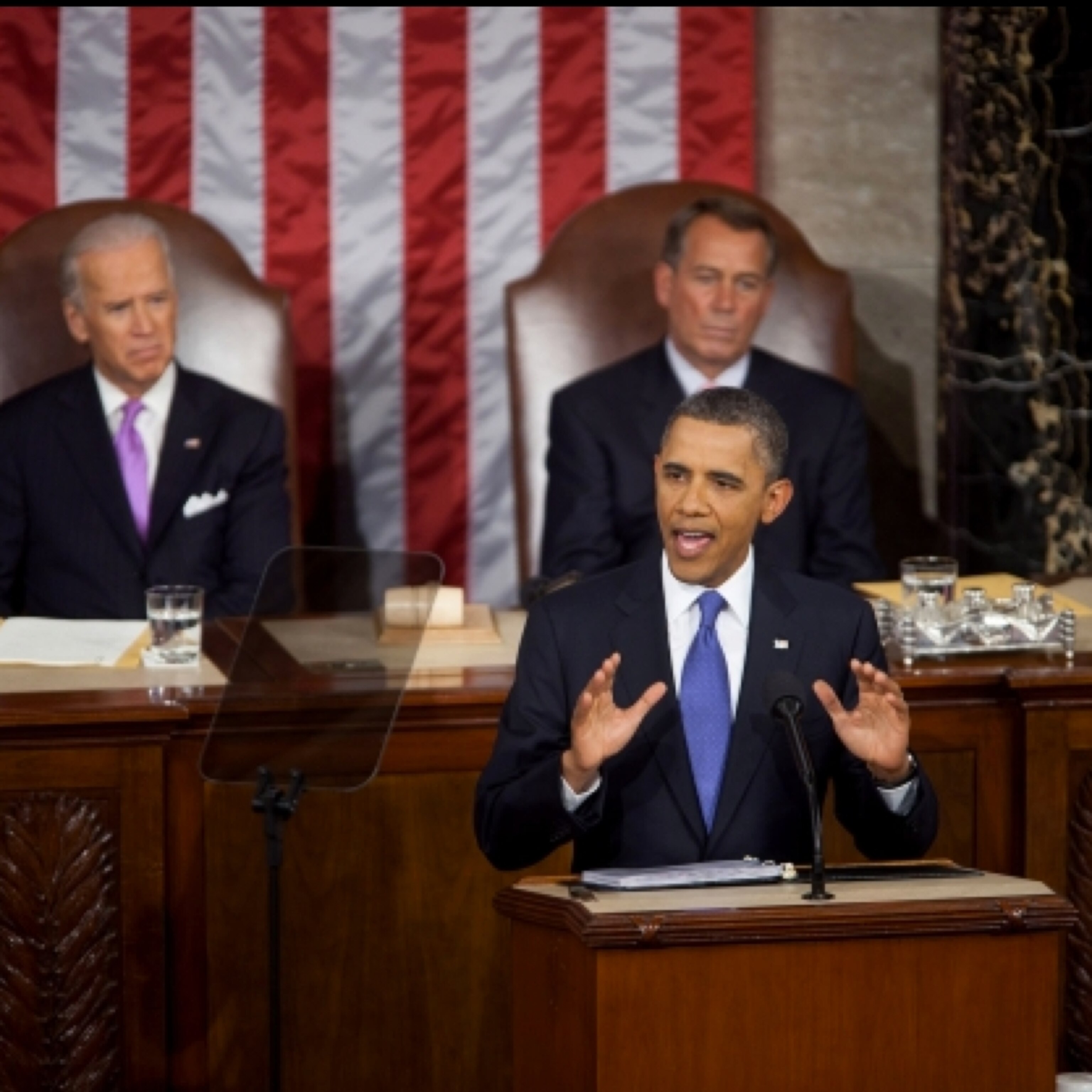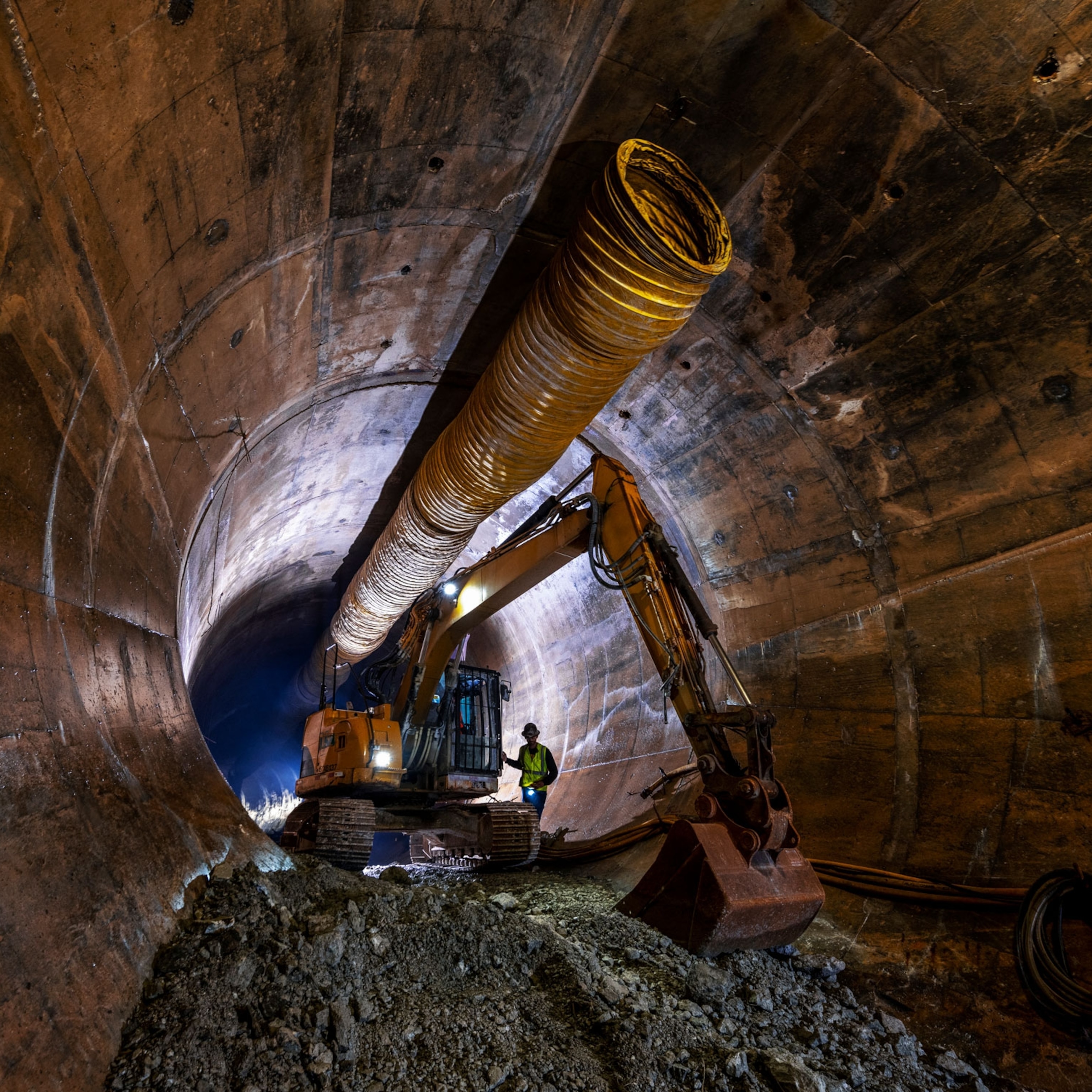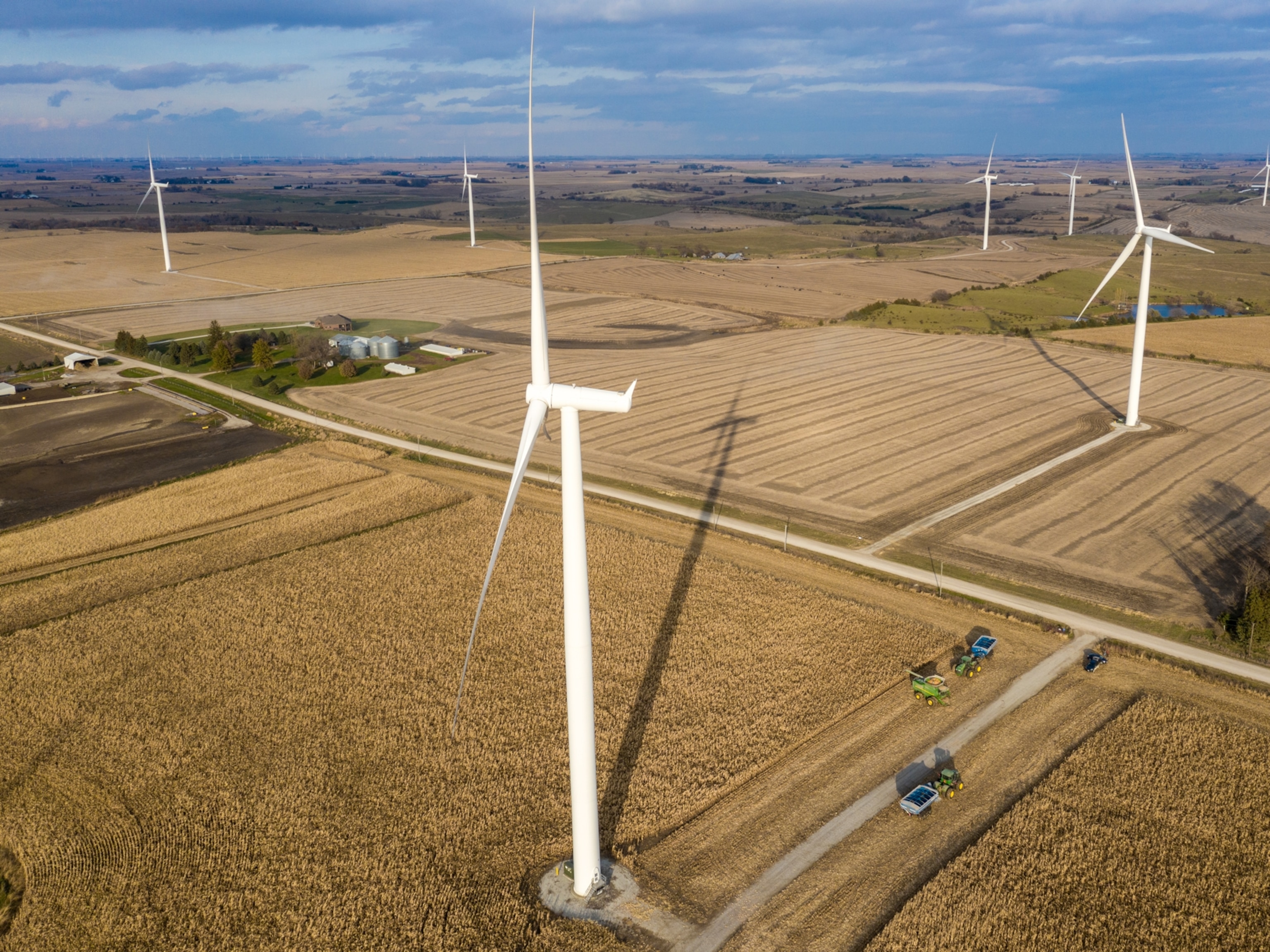

Obama’s Climate Legacy May Come Down to Coal and ‘No’
The Obama administration gave environmentalists little to cheer about last week, but the game is hardly over.
When it comes to climate change, Obama’s rhetoric has been striking and unequivocal (for example here), but with congressional deadlock, his ability to enact climate legislation has been … well, nonexistent. He has been able to make some progress without legislation — the new fuel economy standards [pdf], for example — but with only three years left in his administration his climate legacy is very much in question.
I suspect many in the environmental community, myself included, were looking for some statement from President Obama in last week’s State of the Union address that would lay out an aggressive agenda of new climate-related administrative directives and orders to further burnish that record. The address we got from the president in that regard was a disappointment.
Environment, Climate Barely Mentioned in Speech
As illustrated in the word cloud below, the environment in general and climate in particular are apparently not high on the president’s 2014 agenda. There were numerous mentions of the obvious items like Congress, America and Americans, and the topics of jobs, work and business came up a lot. Of the speech’s approximately 6,778 words, the word “environment” was uttered but once.

Obama did talk about climate change and the need to address the problem. There was the stirring and much ballyhooed statement that “climate change is a fact.” Tough words for climate skeptics to swallow, I am sure (as observed in many of the comments here). But given the short shrift to substantial actions to back it up, the sentence comes across to me as more rhetorical than substantive.
Indeed, as pointed out in this article, the topic that Obama devoted seven paragraphs to last year received only a “passing mention” this year. This remarkable change led the Wall Street Journal to speculate that the president has “soften[ed his] tone” on climate change. (See related story: “Has Obama Kept Promises on Climate of Last State of the Union?“)
‘All of the Above’ Not a Climate Solution
As he did in last year’s address to the nation, the president chose to pair his remarks about climate with boasts of the success of his “all of the above” energy strategy and the huge amounts of domestic oil and natural gas we now produce. It’s a strange juxtaposition — I find it hard if not downright impossible to rationalize a commitment to addressing climate change while endeavoring to pump as much fossil fuels out of the ground as we can. (I’m not the only one seeing the doublespeak: “President Obama on energy: Having it both ways.”)
The president proudly noted that “[o]ver the past eight years, the United States has reduced our total carbon pollution more than any other nation on Earth.” That’s something to be proud of, but he failed to mention that our 2013 emissions, once they’re all in and accounted for, are expected to be two percent higher than 2012’s. He also neglected to acknowledge that we have no plan to meet the president’s own commitment for the United States to lower U.S. emissions by 17 percent by 2020 relative to 2005.
Coal: A Bright Spot in a Sea of Climate ‘Tepidity’
While much of Obama’s speech last Tuesday could be characterized as tepid at best in championing the environment, there was a bright spot: a pledge to move forward on using his executive powers to clamp down those dirty, carbon-spewing coal-fired power plants. To quote Obama:
“I [have] directed my administration to work with states, utilities, and others to set new standards on the amount of carbon pollution our power plants are allowed to dump into the air.”
What he’s talking about here is the promulgation of rules under the Clean Air Act requiring that coal-fired power plants either use technologies like carbon capture and storage so that they emit no more carbon than a modern gas-fired power plant or be replaced by a plant that meets that standard.
This would be a very big deal. If all coal-fired power plants in the United States were replaced by modern gas-fired power plants, we would see our nation’s carbon emissions cut by roughly 13 percent.* And if wind or solar energy (which got a shout-out in his speech) could replace just 10 percent of those plants, about 15 percent of our carbon emissions would be cut.
As this article from this morning’s New York Times documents, crafting such regulations is proving to be no easy task, but probably worth pursuing if Obama is serious about meeting his Copenhagen Accord commitment and bolstering his climate change cred.
Keystone XL Pipeline Found to Be Climate Neutral
If the president’s speech at the beginning of the week was a bit disappointing, the release of the State Department’s final review of the proposed Keystone XL Pipeline at week’s end was downright depressing.
The pipeline has become a cause célèbre for many climate change activists, who see going ahead with the pipeline as “essentially game over” in the words of climate scientist James Hansen, when it comes to climate. While I am not sure I would go so far as to foresee the end of the climate game if the pipeline is approved, it would represent a major setback. When run at capacity, the pipeline would bring more than 300 million barrels of crude oil into the United States annually. That’s the equivalent of roughly four percent of all the oil we consume nationally from all sources — from this one single pipeline. We’re not talking about a pipeline folks, we’re talking about a PIPEline. (See related story: “Three Factors Shape Obama’s Decision on Keystone XL.”)
And the oil it would bring is dirty with lots of embedded carbon. The State Department estimates that the pipeline at full capacity would carry between 147 and 168 million metric tons of carbon — equivalent to about three percent of current total energy-related carbon emissions.**
Last June, the president stated that the pipeline would only be approved “if this project does not significantly exacerbate the problem of carbon pollution.” And so it was not surprising that the section on climate change in the State Department’s report got so much coverage in the media.
The new report’s bottom-line conclusion essentially matches that of the previous report: the Keystone XL Pipeline is unlikely to have much of an effect on climate.***
How Can That Be, Given All the Oil and Embedded Carbon the Pipeline Will Carry?
Based on the State Department’s economic analyses, as long as the price of oil remains high (i.e., above ~$75 per barrel), companies will continue to mine and convert the Alberta tar sands to petroleum because doing so will continue to be profitable. Of course that petroleum needs to find a refinery somewhere. In principle that is what the Keystone XL Pipeline is supposed to do. But the State Department concludes that even if the pipeline is not available, “no harm no foul,” the oil will find its way to refineries by other means (rail, other pipelines, etc.). (See related story: “Illinois Village Leads Charge for Tougher Oil Train Rules.”) In other words, the oil from tar sands (and the carbon emissions that follow) will occur regardless of whether the Keystone XL pipeline exists. Hence, in the language of the report:
“These estimates represent the potential increase in emissions attributable to the proposed Project if one assumed that approval or denial of the proposed Project would directly result in a change in production of 830,000 [barrels per day] bpd of oil sands crudes in Canada…. However, … such a change is not likely to occur under expected market conditions. … [A]pproval or denial of any one crude oil transport project, including the proposed Project, is unlikely to significantly impact the rate of extraction in the oil sands or the continued demand for heavy crude oil at refineries in the United States based on expected oil prices, oil-sands supply costs, transport costs, and supply-demand scenarios.”
Basically, and rightly or wrongly, the State Department has given the Keystone project the climate-change-neutrality seal of approval that the president said was essential. Suffice it to say, this was not the finding most environmentalists (see here and here) — including many climate scientist colleagues (see here and here) — were hoping for. Fortunately for these environmentalists, the seal of approval is not the only hurdle the project has to jump over.
Despite Report Pipeline Not a Done Deal
The Keystone project must still surmount two steep hurdles: EPA’s review and a thumbs up from Secretary of State and climate hawk John Kerry. Kerry or the president can still nix the pipeline if either decides the project is not in the national interest. Given our national commitment to a global climate change accord, it is hard to see, from my point of view, how the pipeline can be in the national interest. But the president, with his “all of the above strategy,” may see things quite differently.
Obama’s Climate Legacy Remains in Question
Obama’s record on climate is thus far mixed: kudos on his fuel economy standards, not so much on boosting fossil fuel production. With three years left to go, he can still swing for the fences and he has two big fat pitches, headed for the plate and right in his wheelhouse. One is coal-fired power plants and the other Keystone. He has the power to swat both out of the park.
_______________________________
End Notes
* Reduction in carbon emissions from switching from coal to natural gas assumes switching reduces emissions by 40 percent. Only considered combustion/electricity generation emissions. This calculation ignores leakage. Data from the U.S. Energy Information Administration. Assumed all coal emissions at data source were from electricity generation.
** Of course carbon is not the only issue when it comes to exploiting Alberta tar sands: water and air pollution, destruction of habitat, and displacement of indigenous peoples come to mind. I will be leading a Nicholas School eco-fact finding trip to Alberta in June to learn more about these issues firsthand. Stay tuned for a report of our findings.
*** Disclaimer: I have not read more than the executive summary of the full report’s thousands of pages.
You May Also Like
Go Further
Animals
- This ‘saber-toothed’ salmon wasn’t quite what we thoughtThis ‘saber-toothed’ salmon wasn’t quite what we thought
- Why this rhino-zebra friendship makes perfect senseWhy this rhino-zebra friendship makes perfect sense
- When did bioluminescence evolve? It’s older than we thought.When did bioluminescence evolve? It’s older than we thought.
- Soy, skim … spider. Are any of these technically milk?Soy, skim … spider. Are any of these technically milk?
- This pristine piece of the Amazon shows nature’s resilienceThis pristine piece of the Amazon shows nature’s resilience
Environment
- This pristine piece of the Amazon shows nature’s resilienceThis pristine piece of the Amazon shows nature’s resilience
- Listen to 30 years of climate change transformed into haunting musicListen to 30 years of climate change transformed into haunting music
- This ancient society tried to stop El Niño—with child sacrificeThis ancient society tried to stop El Niño—with child sacrifice
- U.S. plans to clean its drinking water. What does that mean?U.S. plans to clean its drinking water. What does that mean?
History & Culture
- Séances at the White House? Why these first ladies turned to the occultSéances at the White House? Why these first ladies turned to the occult
- Gambling is everywhere now. When is that a problem?Gambling is everywhere now. When is that a problem?
- Beauty is pain—at least it was in 17th-century SpainBeauty is pain—at least it was in 17th-century Spain
- The real spies who inspired ‘The Ministry of Ungentlemanly Warfare’The real spies who inspired ‘The Ministry of Ungentlemanly Warfare’
- Heard of Zoroastrianism? The religion still has fervent followersHeard of Zoroastrianism? The religion still has fervent followers
Science
- Here's how astronomers found one of the rarest phenomenons in spaceHere's how astronomers found one of the rarest phenomenons in space
- Not an extrovert or introvert? There’s a word for that.Not an extrovert or introvert? There’s a word for that.
- NASA has a plan to clean up space junk—but is going green enough?NASA has a plan to clean up space junk—but is going green enough?
- Soy, skim … spider. Are any of these technically milk?Soy, skim … spider. Are any of these technically milk?
- Can aspirin help protect against colorectal cancers?Can aspirin help protect against colorectal cancers?
Travel
- What it's like to hike the Camino del Mayab in MexicoWhat it's like to hike the Camino del Mayab in Mexico
- Is this small English town Yorkshire's culinary capital?Is this small English town Yorkshire's culinary capital?
- Follow in the footsteps of Robin Hood in Sherwood ForestFollow in the footsteps of Robin Hood in Sherwood Forest
- This chef is taking Indian cuisine in a bold new directionThis chef is taking Indian cuisine in a bold new direction







